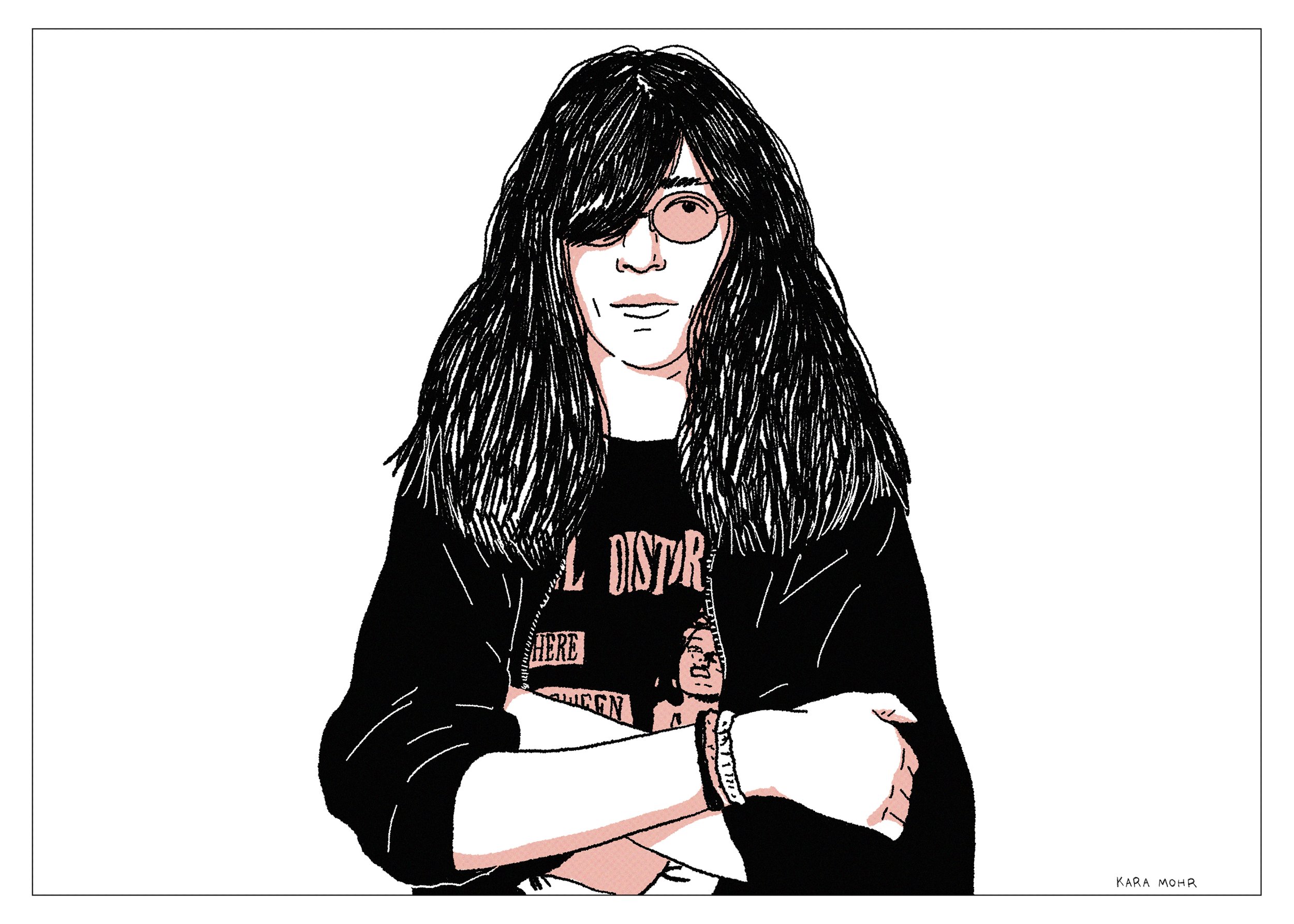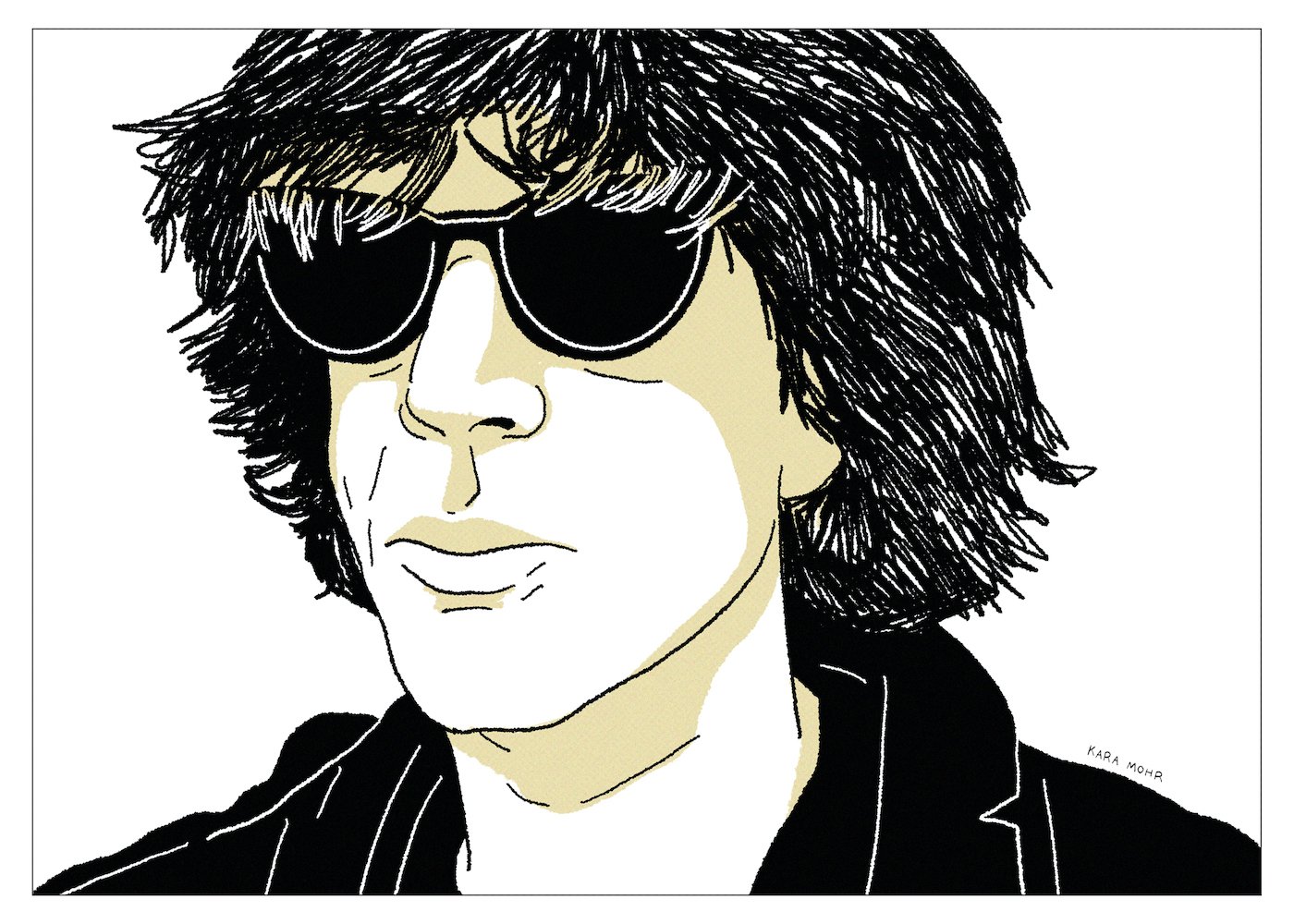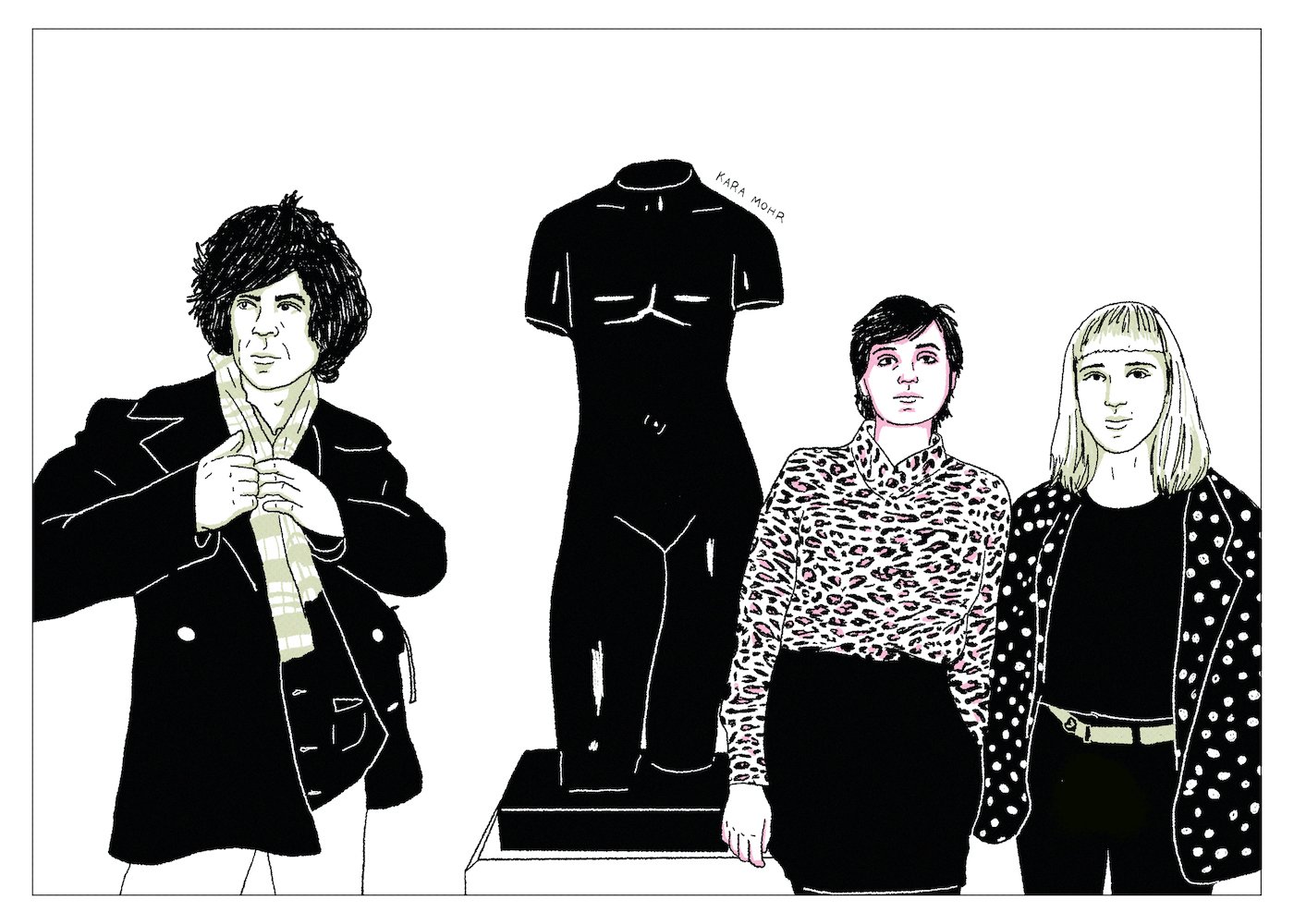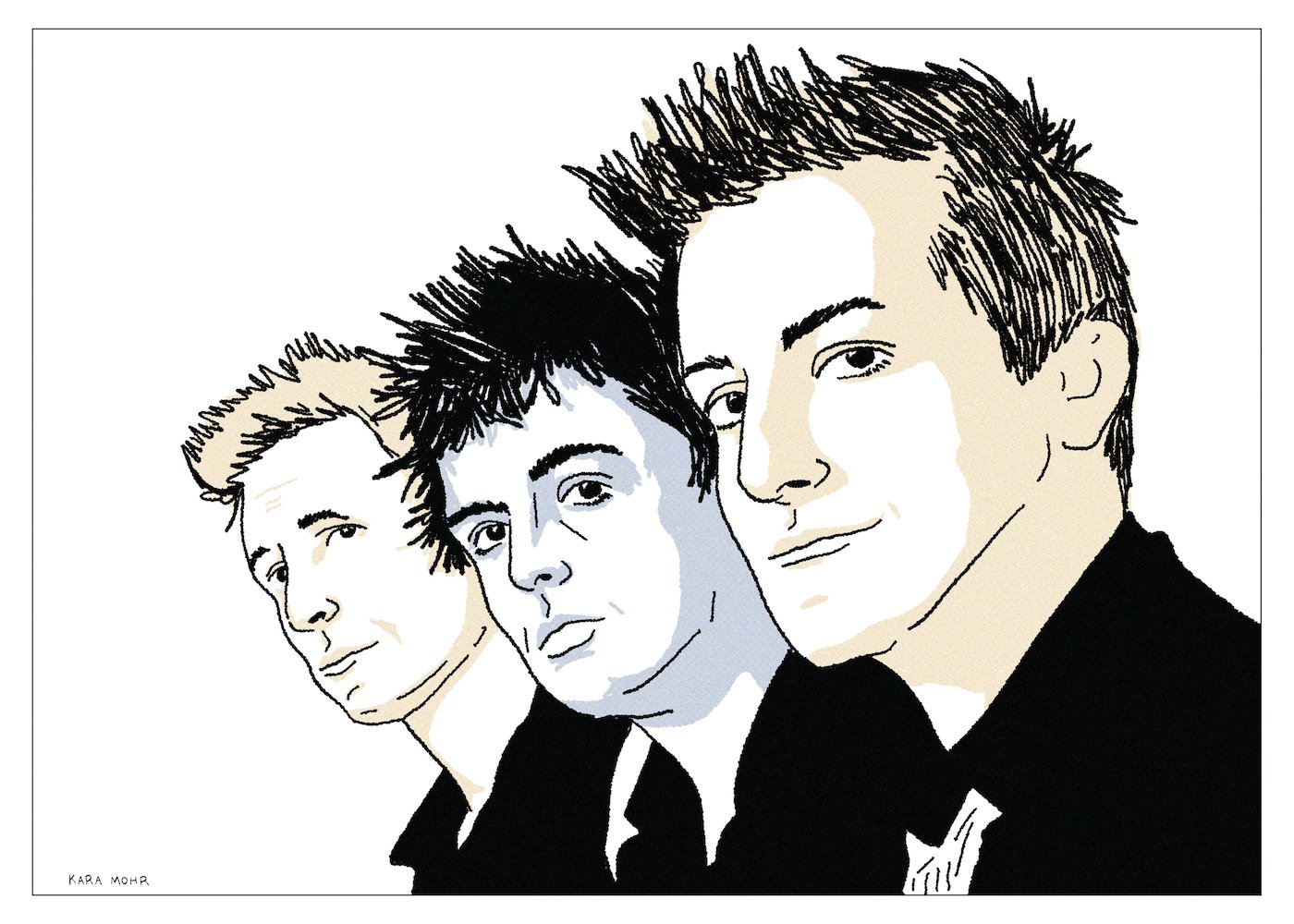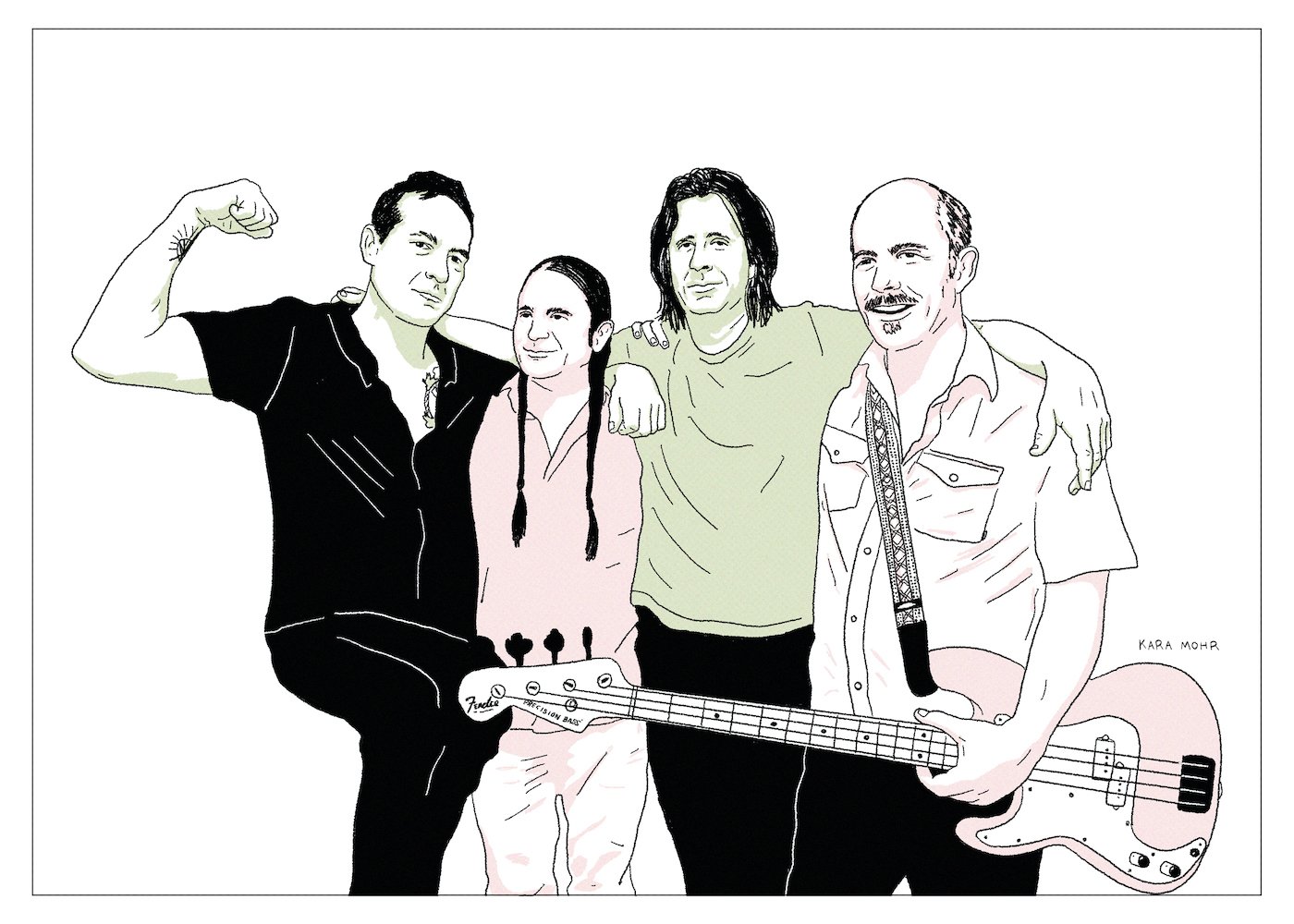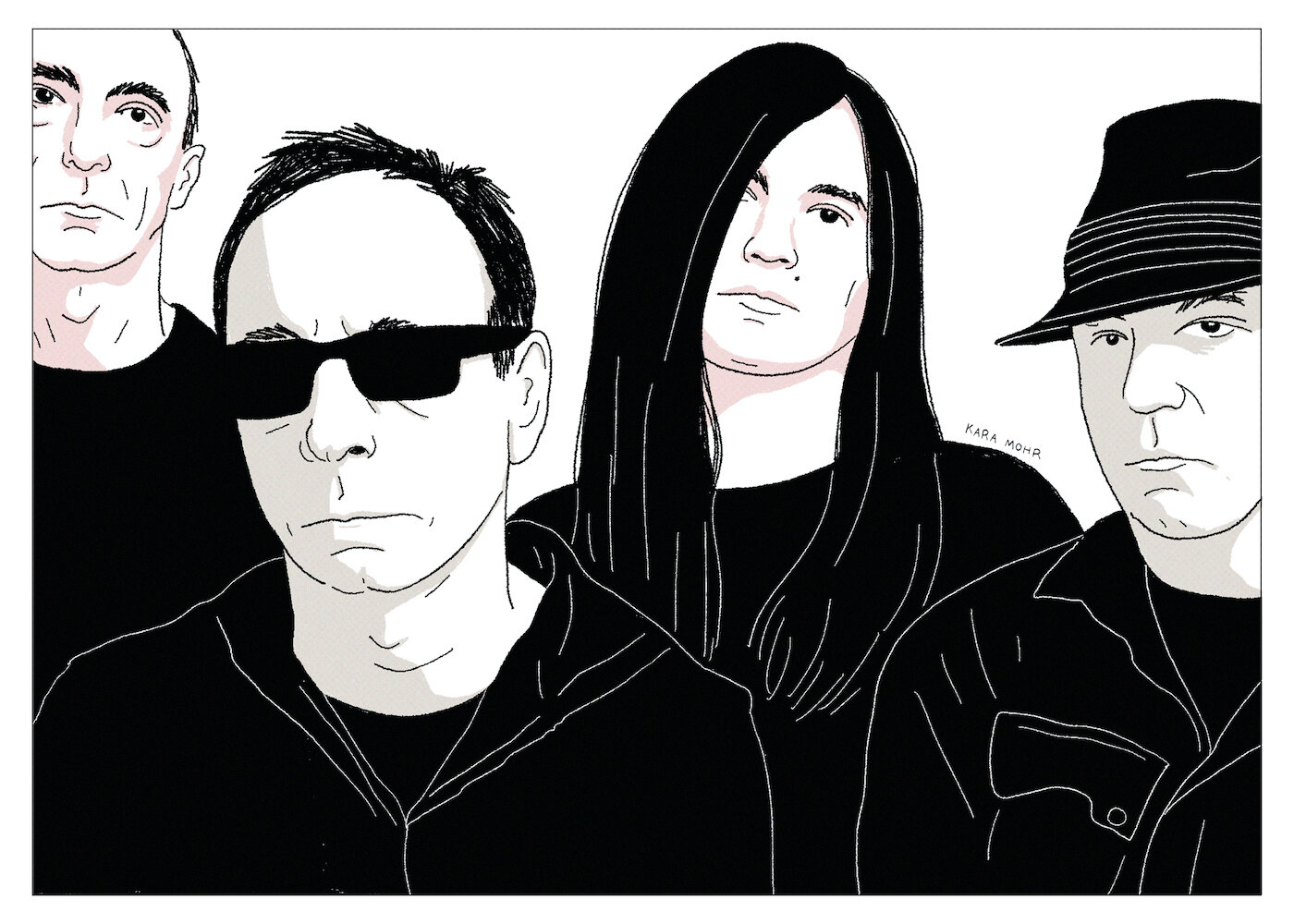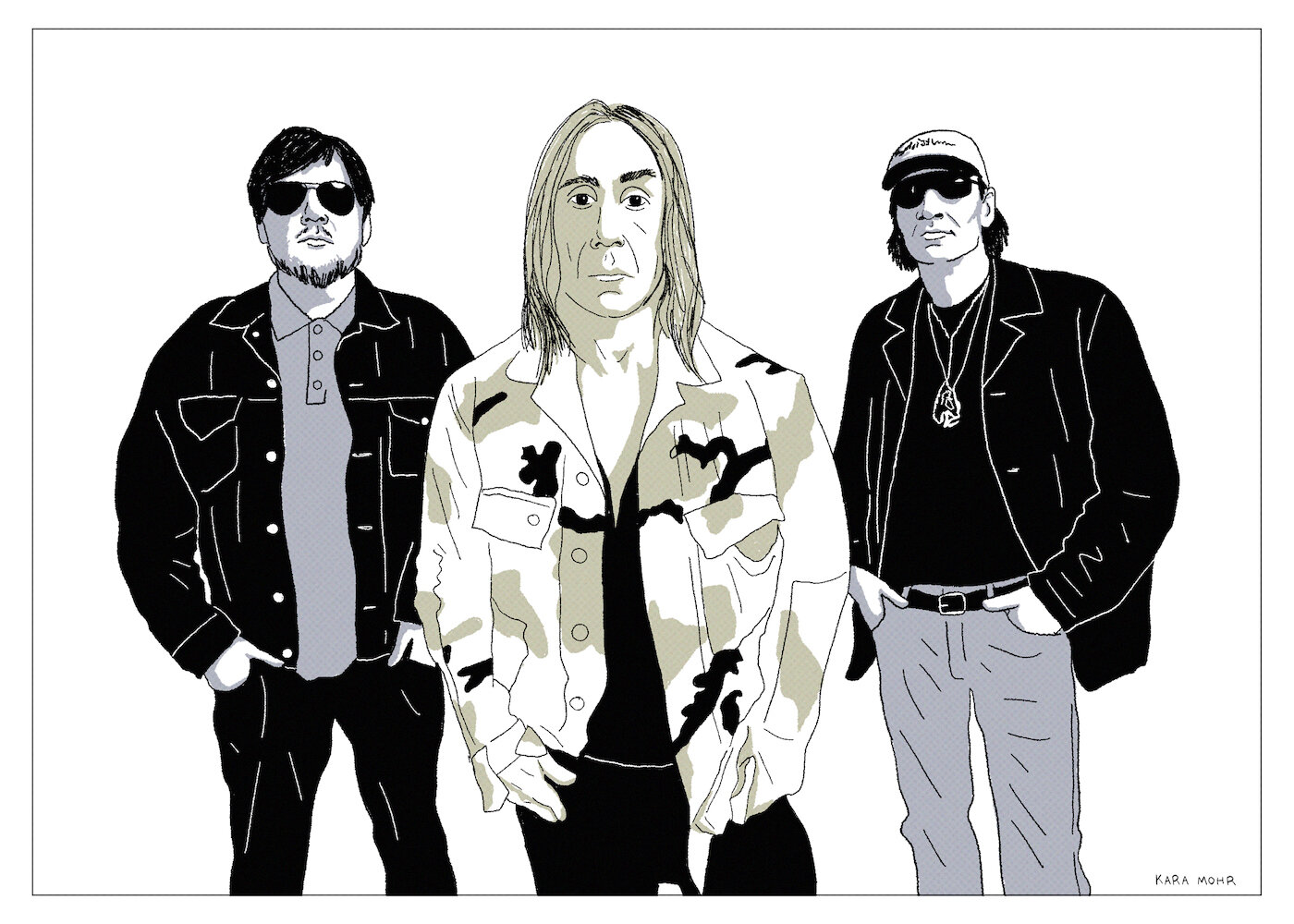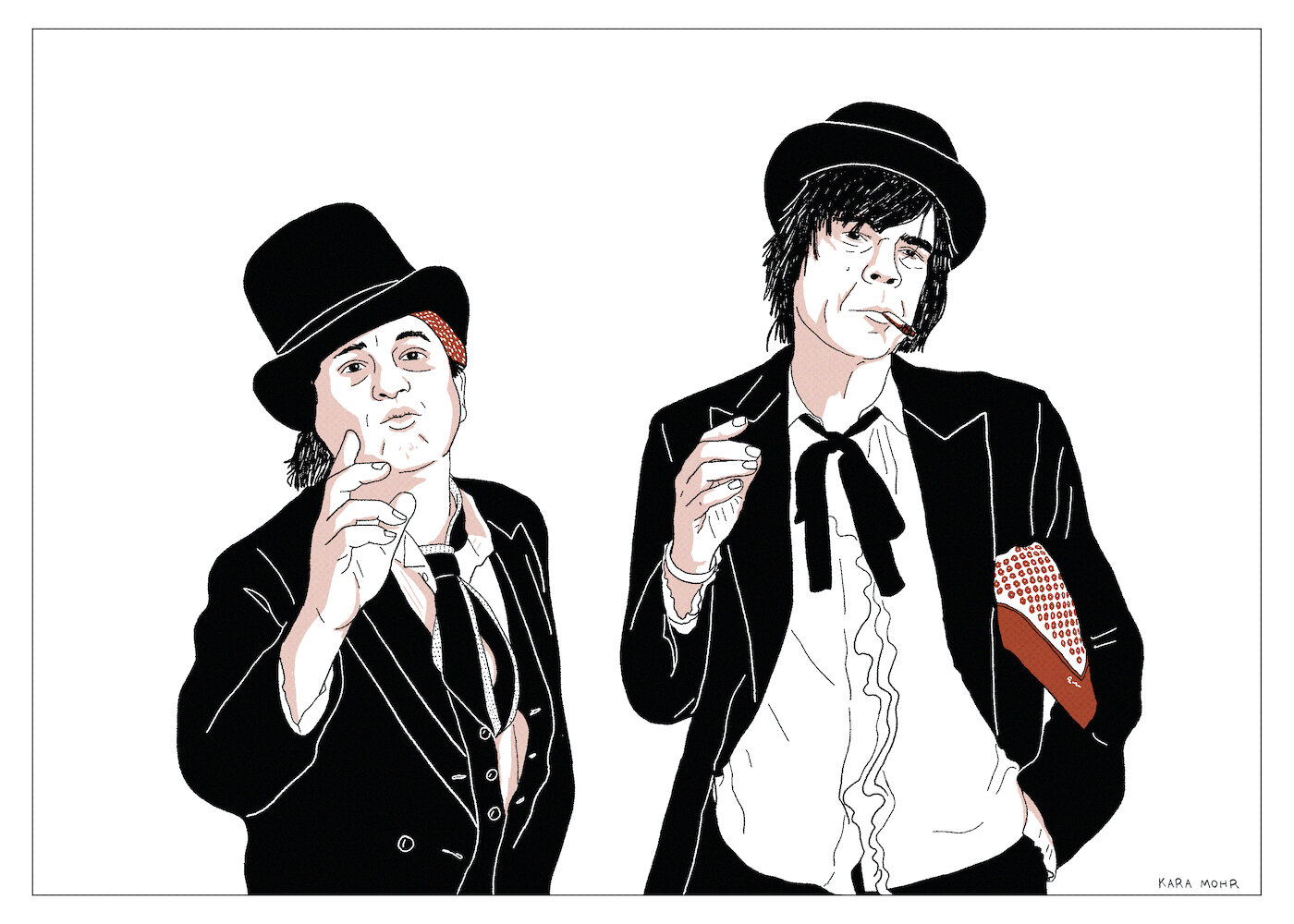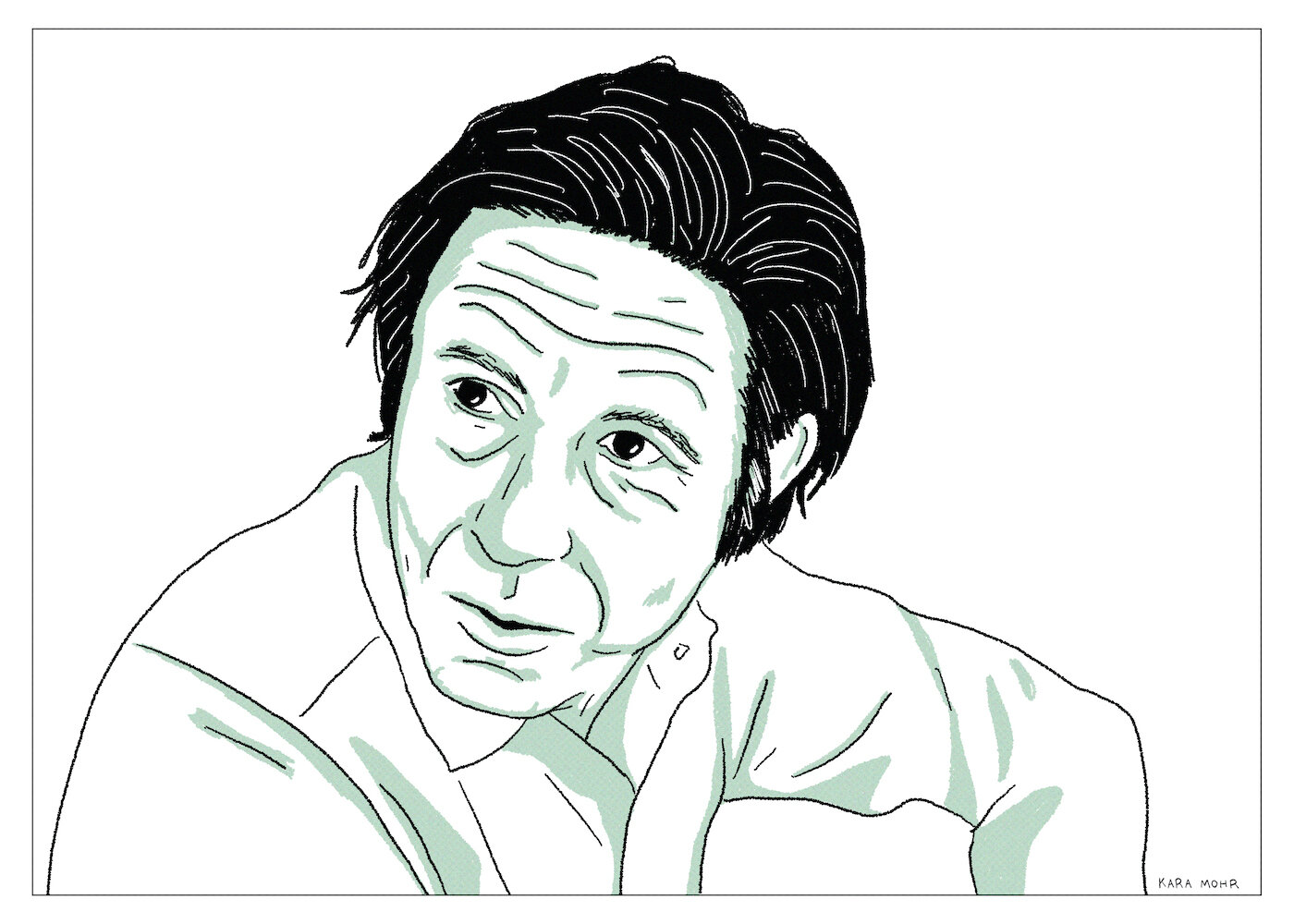Joey Ramone “Don’t Worry About Me”
“Don’t Worry About Me” is almost exactly what you'd expect from a Joey Ramone on death's doorstep solo album. Which is to say it’s alternately frightened, bored, unfinished, funny, maudlin and brilliant. Joey croons, bleats and tawks his way through eleven tracks, all (but one) of which clock in under four minutes, but none of which are under two. The (by Ramones’ standards) mid-tempo nature of “Dont Worry About Me” — the seeming lack of rush — suggests a pace afforded by age, poor health and, most of all, no Johnny Ramone. Johnny had zero time for bullshit. But, especially at the very end, Joey had all the time in the world for it.
Dim Stars “Dim Stars”
Though it was released in 1991, “Dim Stars” sounds like New York City in 1988 — when Jon Spencer was fronting Pussy Galore and before Sonic Youth got a major label deal and when Avenue A was still sketchy and when everything stunk of imminent recession. Like all of those other things, you could call “Dim Stars” loose and offhanded, or you could call it sloppy. You could call it artful or avant garde, or you could say that it sounds like shit. But in fact, it really sounds like four different things. One, like Sonic Youth with Richard Hell splitting the difference between Thurston and Kim. Two, like a poorly made sequel to “Destiny Street.” Three, like an overqualified Scuzz Rock band that had not yet found its groove. And, finally, like a post-structuralist hipster cover band.
Chain and The Gang “In Cool Blood”
Like Nation of Ulysses before them, The Make-Up were more legendary than popular. And so, just five years after they first appeared, the most stylish, most ideological band on the planet was dissolved. In the Aughts, Ian Svenonius (along with Michelle Mae and Neil Hagerty) formed Weird War, but because socialism might be bad for business, the singer spent most of that Aughts moonlighting as a subject slash contributor for Index Magazine — and anyone else who wanted his ideas and his hair for their pages. By 2009, he was more an essayist, a great interview, a great photoshoot, and a hipster cad than he was a rock and roller. He was to Vice what Fran Lebowitz was to Vanity Fair. Until one day — when he’d either run out of ideas or when he had too many out of them — Svenonius started another new band. Chain and the Gang started as a lower stakes, rotating cast of friends and acolytes, sponsored by Calvin Johnson. By then, fans (and critics) were familiar with Svenonius’ Post-Structuralist, Marxist provocateur shtick. What they were less familiar with was his winking, hip-shaking good times.
Green Day “Revolution Radio”
Twenty-two years after they first broke out with “Longview,” twelve years after they were the biggest Rock band in the world, eleven years after they inadvertently bankrupted Lookout! Records and four years after Billy Joe melted down onstage, Green Day was, once again, a band with uncertain prospects. And yet, their twelfth studio album was not a sharp turn or a step back or a leap forward. “Revolution Radio” was more a shoring up of lost ground — more like downside protection. All three members of the band were well into their forties by the time of the record’s release, meaning that the snotty charms of their youth would not play the same. Self-loathing and fuck you's present much differently in middle-aged millionaires than they do in twenty year olds. And so, in the year that Donald Trump was elected President and at a time when album sales were usurped by track steams, Green Day was in the unenviable position of having to question both their form and their function.
Hot Snakes “Jericho Sirens”
Hot Snakes are a miracle. They are a miracle for how they survived the legends of Drive Like Jehu and Rocket From the Crypt. They are a miracle for how John Reis rolls riffs from a twenty-sided die. They are a miracle for how Rick Froberg screams so loudly, so precisely on tune. They are a miracle for how much force and tension they create and how quickly they release it. They are a miracle for how they disappeared and how, more than a decade later, they came back. But, mostly, they are a miracle for how they marry Rick’s fuck-it-all-ness, with John’s fuck-yeah-ness. That is their greatest miracle.
Wire “Change Becomes Us”
Wire was an argument against the zeitgeist. Anti-Rock. Anti-New Wave. Anti-Electronic. The alternative to Alternative. And, for decades, they despised nostalgia. They did not revel in the myth of “Pink Flag.” They were constantly present and stepping forward. But, what happens when the argument is futile? What happens when the future is gone? What comes after “posteverything”?
The Stooges “The Weirdness”
When The Beatles broke up, it ached of permanence. But, twenty years later, the bruises were forgotten. Every band that went away eventually came back. The Who. The Eagles. Even The Velvet Underground. Hippies turned Yuppies understood the motivation — if there was money to be made, the end was never really the end. But Generation X, with our Indie ideals, didn’t get the memo. When The Pixies reunited, we were pissed. And when The Stooges earnestly tried, but fell short, we were out for blood.
The Ramones “Mondo Bizarro”
Musically, The Ramones were perhaps the most conservative Rock band of all time. Although Johnny was the only political conservative, the band was almost regressive in their world view. Their sameness , however, was also their genius. When they got progressive in the late 80s, their music got lost. In 1992, with the addition of C.J. Ramone on bass, the group recorded and released “Mondo Bizarro,” an album attempts exactly zero new ideas. But it does favorably add to their oeuvre by finding dumb jokes they missed in their teens and by capturing some of the pathos of a band that was both always together and beloved and always alone and unlovable.
The New York Dolls “One Day It Will Please Us to Remember Even This”
Morrissey is both notoriously impossible and capable of the impossible. In 2004, he proved as much when he invited David Johansen, Sylvain Sylvain and Arthur Kane, the Dolls’ surviving members, to play a festival in London. Incredibly, the band agreed. For a group so doomed and so frozen in ember, a reunion seemed unthinkable. And yet, it happened. If any band deserved a life after death, it was assuredly the New York Dolls. By 2006, with only Johansen and Sylvain left to carry the flag, they released “One Day It Will Please Us to Remember Even This,” their first album in over thirty years.
John Doe “Keeper”
John Doe’s voice was once the sound of a storm cloud over a city on fire. The city was Los Angeles. The storm was sun shower named Exene Cervenka, Doe’s wife and partner in the band X. But, nearly seventy now and many years into a decorated solo career, John Doe has spent his second act answering the question: what happens when there is no city on fire and no storm below? In 2011, the year he released “Keeper,” Doe was fifty eight. He’d remarried. He had three daughters. He didn’t live in L.A. His singular challenge was to write love songs where the people in the songs are actually loved. Simple, right?

